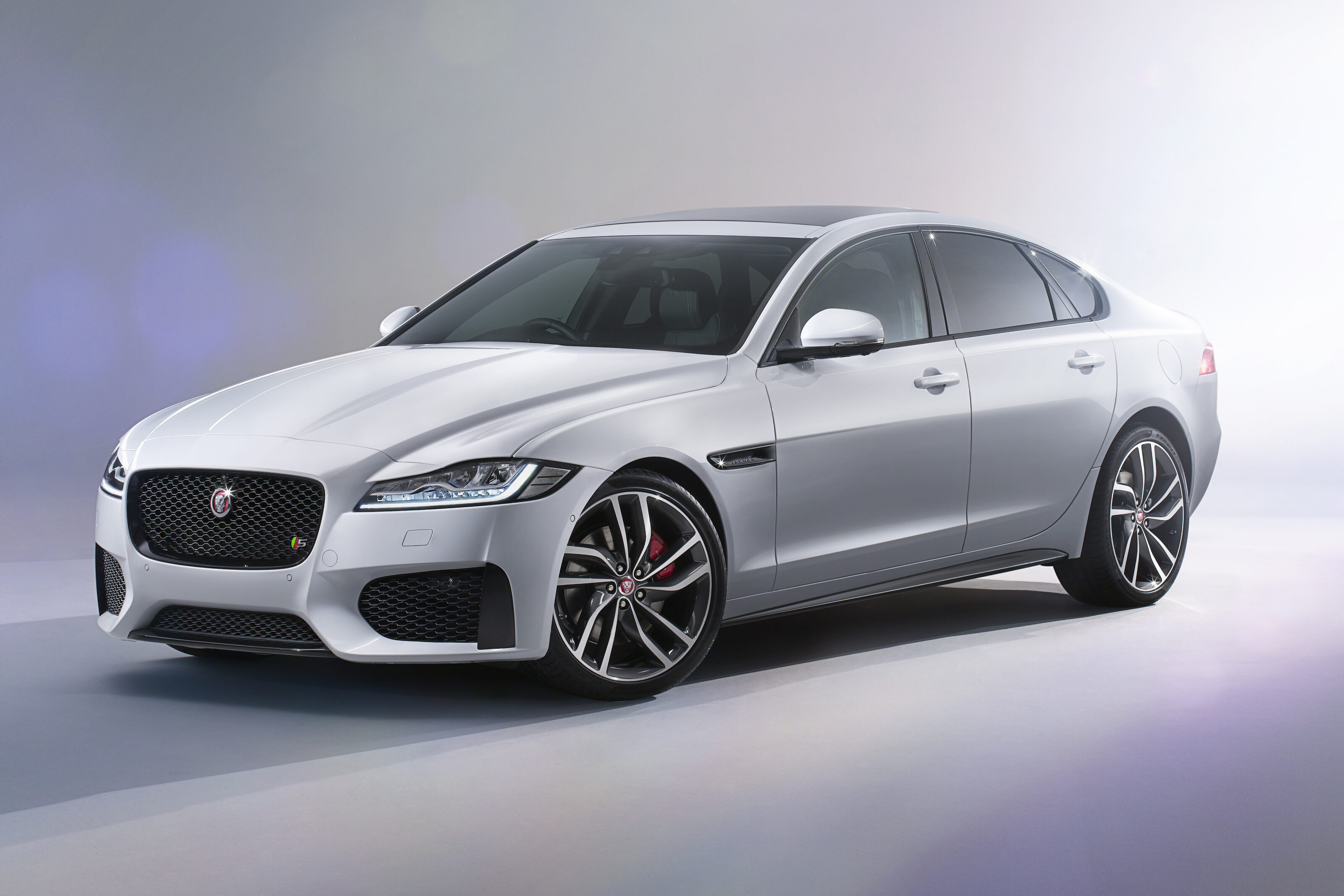The new generation Jaguar XF has been revealed in London ahead of its star-billing at the company’s New York motor show stand next week. It’s the second-generation of Jaguar’s answer to the BMW 5 Series and Mercedes-Benz E-Class as well as the recently upgraded Audi A6.
The all-new XF’s styling echoes the look that kicked of Jaguar’s revolution back in 2007 as the first of its current line of stunningly attractive models. Ian Callum, who responsible for both this XF and the original, explained to Wheels that this car didn’t need to make the splash of that 2007 version. “The XF has a different job to do,” Callum told Wheels. “[With] XE we’re able to do a sportier sedan. So I think the XF will grow up a bit. Because it’s in a different place now, it has a different job to do.”
That means the XF keeps its high waistline and overall posture, and head on is unmistakably a member of the Jaguar family – as is the smaller BMW 3 Series and Mercedes-Benz C-Class rival, the Jaguar XE. “You’ll see a change in style eventually, but it won’t be XF,” says Callum. “It won’t be dramatic; it will be evolutionary. Because the change happened because it had to happen – we had to move from 1955 to 2004 in one big jump. When people ask me ‘when will you do your next revolution, I don’t think I’ll do one actually. Of course we’ll move on and come up with different idea, but the main ethos is a continuation … because we don’t need to [have a revolution].”
The new XF is 7mm shorter and sits 3mm lower than its predecessor, but has a 2960mm wheelbase – a whopping 51mm longer, and a clear indication of Jaguar’s growth ambition in China, where rear-seat space is paramount.
It’s also much more advanced in technical terms, with its aluminium-intensive architecture reducing up to 190kg over the predecessor, with the rear-wheel drive sedan also 28 per cent more rigid than before and offering 50:50 weight distribution. At the front is a double-wishbone suspension arrangement, while there’s an integral link set-up at the rear. There’s also adaptive damping, electronic steering and customisable dynamic settings for both these and the throttle response.
Engines include a 2.0-litre diesel producing 120kW/380Nm from Jaguar’s new Ingenium family, as well as 132kW/430Nm version of the same unit. These will be the only engines to be teamed with a six-speed manual, with the optional eight-speed auto that’ll be hooked up to other engines: while full details are yet to be revealed, Jaguar has confirmed a 3.0-litre V6 twin-turbo diesel as well as the 280kW/450Nm 3.0-litre supercharged V6 found in the Jaguar F-Type coupe and convertible.
The engine and weight savings result in economy figures of ‘over 70mpg’ that translates to 4.0L/100km against the current 2.2-litre diesel XF’s best of 5.2L/100km. There’s no word yet on a hybrid version, however Jaguar’s experience combined with the fact that BMW, Audi and Mercedes offer hybrid versions of their sedans makes it likely that the new XF will indeed join the party.
Of course high performance versions will arrive later, with the current XF-RS offered in Europe in both sedan and wagon form and, thanks to a 373kW supercharged V8, is capable of 300km/h.
Inside, the laggy touchscreen of the previous model has been replaced by a 10.2-inch version that’s much more responsive to touch inputs, as seen on the Land Rover Discovery Sport shown at the Paris motor show in 2014, as well as a reconfigurable digital instrument cluster – think of the Audi TT virtual cockpit in more elegant form.
More detail on the Jaguar XF will be revealed at the 2015 New York motor show that commences on 1 April.





